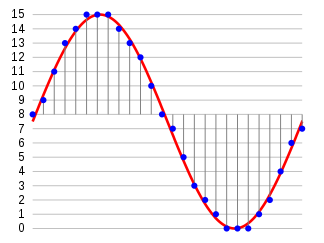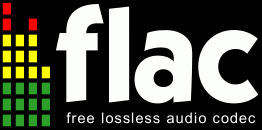Diferencia entre revisiones de «Soinu formatuak»
| Línea 37: | Línea 37: | ||
Behin datu talde guztia sortuta, konprimituta edo konprimitu gabea, datu horiek edukiontzi formatu batean sartu behar dira, bere edukia behar bezala markatuta izateko. | Behin datu talde guztia sortuta, konprimituta edo konprimitu gabea, datu horiek edukiontzi formatu batean sartu behar dira, bere edukia behar bezala markatuta izateko. | ||
Hasieran esan dugun bezala, | Hasieran esan dugun bezala, konpresio sistema bakoitza formatu askotan sar daiteke, bakoitzak formatu batean batez ere erabiltzen den arren. | ||
Taula honetan dokumentuan komentatu ditugun sistemak eta hauek jasaten dituzten formatuak lotzen ditugu<ref>[https://en.wikipedia.org/wiki/Comparison_of_video_container_formats#Audio_formats_supported "Comparison of container formats", Wikipedia Inglesez.] | |||
Taula moldatuta dago soinu edizioan normalean erabiltzen ez diren formatuak kenduz.</ref>: | |||
https:// | |||
{| class="wikitable" style="font-size: smaller; text-align: center; width: 100%; table-layout: fixed;" | |||
|- | |||
! rowspan="2" style="width: 6em"| | |||
! colspan="7"|[[Lossy compression]] | |||
! colspan="2"|No compression | |||
! colspan="4"|[[Lossless compression]] | |||
|- | |||
! [[MP3]] | |||
! [[Windows Media Audio|WMA]] | |||
! [[Vorbis]] | |||
! [[Opus (audio format)|Opus]] | |||
! [[Advanced Audio Coding|AAC]] | |||
! [[Dolby Digital|AC-3]] | |||
! [[DTS Coherent Acoustics|DTS]] | |||
! [[Pulse-code modulation|PCM]] | |||
! [[Linear pulse-code modulation|LPCM]] | |||
! [[FLAC]] | |||
! [[Apple Lossless|ALAC]] | |||
! [[Meridian Lossless Packing|MLP / Dolby TrueHD]] | |||
! [[DTS (sound system)#DTS audio codec|DTS-HD]] | |||
|- | |||
! [[Audio Video Interleave|AVI]] | |||
| {{yes}} | |||
| {{yes}}<ref name="RealAudio in AVI">Older types of RealAudio (including ATRAC3)use constant bitrate compression, and therefore are fully compatible with the ancient ACM interface. Newest type of RealAudio is actually AAC, which never has been a problem to the DirectShow-based decoders.</ref> | |||
| {{no2|Not officially}} | |||
| {{dunno}} | |||
| {{yes}}<ref name="VBR audio in AVI">There is a value in the stream headers, called dwSampleSize, which is 0 in order to trigger VBR stream seeking. This is officially documented in the MSDN and not a hack, bug or whatever. The way MP3-VBR and AAC are stored in AVI are specified and completely compliant with the AVI file specification.</ref> | |||
| {{yes}} | |||
| {{yes}} | |||
| {{yes}} | |||
| {{yes}} | |||
| {{no}} | |||
| {{no}} | |||
| {{no}} | |||
| {{dunno}} | |||
|- | |||
! [[Matroska]] | |||
| {{yes}} | |||
| {{yes}} | |||
| {{yes}} | |||
| {{yes}} | |||
| {{yes}} | |||
| {{yes}} | |||
| {{yes}} | |||
| {{yes}} | |||
| {{yes}} | |||
| {{yes}} | |||
| {{yes}} | |||
| {{yes}} | |||
| {{yes}} | |||
|- | |||
! [[MPEG-4 Part 14|MP4]] | |||
| {{yes}} | |||
| {{yes}} | |||
| {{no2|Not officially}} | |||
| {{yes}} | |||
| {{yes}} | |||
| {{yes}}<ref name="AC-3 in MP4">According to "ETSI TS 102 366 v1.2.1 - Digital Audio Compression (AC-3, Enhanced AC-3) Standard, Annex F"</ref> | |||
| {{yes}} | |||
| {{no}} | |||
| {{yes}} | |||
| {{no2|Not officially<ref>[https://git.xiph.org/?p=flac.git;a=blob;f=doc/isoflac.txt Encapsulation of FLAC in ISO Base Media File Format] [[Xiph.Org Foundation]]</ref>}} | |||
| {{yes}} | |||
| {{no}} | |||
| {{yes}}<ref name="DTS-HD in MP4">{{cite web|title=MP4 Registration Authority|url=http://www.mp4ra.org/object.html|publisher=ISO|accessdate=2013-10-10}}</ref> | |||
|- | |||
! [[MPEG-1|MPG]] | |||
| {{yes}} | |||
| {{dunno}} | |||
| {{dunno}} | |||
| {{no}} | |||
| {{dunno}} | |||
| {{dunno}} | |||
| {{dunno}} | |||
| {{dunno}} | |||
| {{yes}} | |||
| {{dunno}} | |||
| {{dunno}} | |||
| {{dunno}} | |||
| {{dunno}} | |||
|- | |||
! [[Material eXchange Format|MXF]] | |||
| {{yes}} | |||
| {{no}} | |||
| {{dunno}} | |||
| {{dunno}} | |||
| {{yes}} | |||
| {{yes}} | |||
| {{yes}} | |||
| {{yes}} | |||
| {{yes}} | |||
| {{no}} | |||
| {{no}} | |||
| {{yes}} | |||
| {{yes}} | |||
|- | |||
! [[Ogg]] | |||
| {{yes}} | |||
| {{no}} | |||
| {{yes}} | |||
| {{yes}} | |||
| {{no}} | |||
| {{no}} | |||
| {{no}} | |||
| {{yes}} | |||
| {{yes}} | |||
| {{yes}} | |||
| {{no}} | |||
| {{no}} | |||
| {{no}} | |||
|- | |||
! [[QuickTime File Format|QuickTime]] | |||
| {{yes}} | |||
| {{yes}} | |||
| {{yes}} | |||
| {{dunno}} | |||
| {{yes}} | |||
| | |||
| {{dunno}} | |||
| {{yes}} | |||
| {{yes}} | |||
| {{yes}} | |||
| {{yes}} | |||
| {{no}} | |||
| {{no}} | |||
|} | |||
==Erreferentziak eta informazio iturriak== | ==Erreferentziak eta informazio iturriak== | ||
Revisión del 15:00 7 ene 2018
Sarrera
Fitxategi formatu batek informazioa fitxategian nola gordetzen den definitzen duen estandarra da. Sistema informatikoetan, ordenagailuek bakarrik bit-ak gorde ditzakete. Hoiei orden eta zentzu bat emateko fitxategi formatuak sortzen dira; 0 eta 1 zenbakien segidak esanahai konkretua izateko, hain zuzen ere.[1] Soinu fitxategien kasuan, batez ere soinuaren irudikapena gordeko dituzten fitxategiak izango dira, informazio osagarria ere jasotzeko aukerarekin.
Dokumentu honetan, formatua bera aztertzeaz aparte, konpresioari begirada sakona ere emango diogu. Konpresioa bit kopuru osoa murrizteko tekniken multzoa da, fitxategiaren tamaina murrizteko helburuarekin. Konpresio teknika ezberdinekin tratatutako informazioa fitxategi formatu ezberdinetan sartu daitezke, adibidez, OGG fitxategi batean MP3-an konprimitutako soinua sartu daiteke. [2]
Soinu digitalaren azalpen laburra
Formatuen azalpenarekin hasi baino lehen, soinu digitalaren sorrera eta konposizioa kontuan hartu behar ditugu. Soinu digitala sortzerakoan, digital bihurtu behar dugun iturri analogiko batetik abiatzen gara normalean. Soinu hori digitalera pasatzerakoan, segundo bakoitzeko hainbat lagin hartzen dira (normalean Nyquist teorema jarraituz), bere balio analogikoa neurtzen da eta bit-etan dagoen balio bat ematen zaio. Prozezu honi PCM deitzen zaio, eta horren ondoren, interesatzen zaigun konpresio eta formatura egokituko dugun 0 eta 1en segida bat izango dugu. Segida honetan, lagin guztiak bit kopuru berdina badaukate, eta ez bazaie argoritmo bat aplikatzen, linealki uniformea dela esango dugu, eta LPCM deituko diogu. [3]
Konpresioa
Behin datuen segida hori sortuta, konpresioa aplikatzea aukeratu dezakegu. Konpresio hori bi motatakoa izan daiteke: galera gabekoa edo galeraduna. [4]
Galera gabeko audio konpresioa
Galera gabeko konpresioa datuak espazio gutxiagoan gordetzea ahaltzen du, informazioa galdu gabe. Datu originalak berreskura daitezke konprimitutako datuetatik abiatuta.
Datuen aurrezpen hau normalean soinu eta isiluneari bit kopuru ezberdina ematen eskuratzen da. LPCM konprimitu gabeko soinuan, iraupen bereko soinu unitate bik bit kopuru bera izango dute. Galera gabeko konpresioan, berriz, soinua bit kopuru gehiago izango ditu, eta konpresioa isilunetan aplikatuko da.
Galera gabeko konpresio sistema erabilienak FLAC eta ALAC dira, biek 2:1 konpresio erlazioa emanez. Hau da, LPCM-an soinu bera bit kopuru bikoitza okupatuko du, batez beste. Gaur egun, FLAC eta ALAC lizentzia askepean daude, eta haien arteko oinarrizko ezberdintasuna jasatzen dituzten lagin bakoitzeko bit kopurua da. FLAC 4 bit-etik 24 bit-era edozein kopuru jasatzen du [5]; ALAC, aldiz, 16, 20, 24 eta 32 bit bakarrik jasatzen ditu.[6]
Galeradun konpresioa
Galeradun konpresioa soinuaren bit kopurua are gehiago murriztea ahaltzen du, soinuaren informazio parte bat kenduz eta datuak sinplifikatuz. Prozezu hau psikoakustikaren limiteak aprobetxatuz egiten da batez ere; giza entzumena nabarituko ez dituen aldaketak eginez, eta, ahal den einean, zarata gutxi sartuz.
Galdedun konpresioen artean, MP3 ezagunena da, baina beste asko topatu ditzazkegu. Adibidez, Vorbis eta Opus, lizentzia askea dutenak; edo WMA eta AAC, Microsoft eta Apple garatutak, hurrenez hurren.
Fitxategiaren sorrera eta formatua
Behin datu talde guztia sortuta, konprimituta edo konprimitu gabea, datu horiek edukiontzi formatu batean sartu behar dira, bere edukia behar bezala markatuta izateko.
Hasieran esan dugun bezala, konpresio sistema bakoitza formatu askotan sar daiteke, bakoitzak formatu batean batez ere erabiltzen den arren.
Taula honetan dokumentuan komentatu ditugun sistemak eta hauek jasaten dituzten formatuak lotzen ditugu[7]:
Erreferentziak eta informazio iturriak
- ↑ "Formato de archivo", Wikipedia Gaztelaniaz.
- ↑ "Digital container format", Wikipedia Inglesez.
- ↑ "Pulse Code Modulation", Wikipedia Inglesez.
- ↑ "Audio File Format", Wikipedia Inglesez.
- ↑ "FLAC", Wikipedia Inglesez.
- ↑ "Apple Lossless", Wikipedia Inglesez.
- ↑ "Comparison of container formats", Wikipedia Inglesez. Taula moldatuta dago soinu edizioan normalean erabiltzen ez diren formatuak kenduz.
- ↑ Older types of RealAudio (including ATRAC3)use constant bitrate compression, and therefore are fully compatible with the ancient ACM interface. Newest type of RealAudio is actually AAC, which never has been a problem to the DirectShow-based decoders.
- ↑ There is a value in the stream headers, called dwSampleSize, which is 0 in order to trigger VBR stream seeking. This is officially documented in the MSDN and not a hack, bug or whatever. The way MP3-VBR and AAC are stored in AVI are specified and completely compliant with the AVI file specification.
- ↑ According to "ETSI TS 102 366 v1.2.1 - Digital Audio Compression (AC-3, Enhanced AC-3) Standard, Annex F"
- ↑ Plantilla:Cite web


